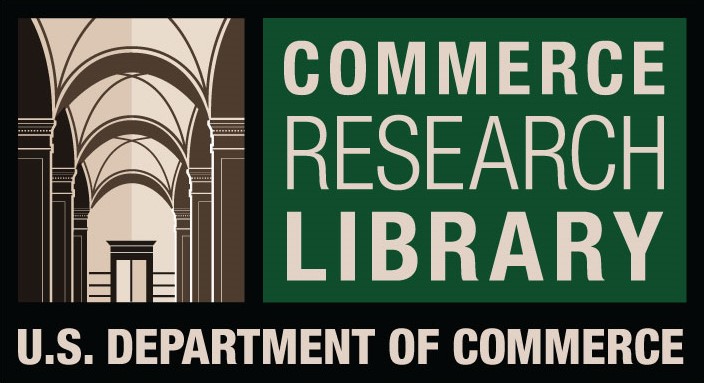Project-based Learning Strategy: An Innovative Proposal for Local Education System
DOI:
https://doi.org/10.61841/5fe95v50Keywords:
Education System, Innovation, Learning, Methodological Strategy, ProjectAbstract
The educational and professional approach leads the individual to create strategies that allow them to develop knowledge in an active way, in order to trigger solutions to a problem. The purpose of this research is to study Project Based Learning (ABP), as an innovative proposal for the Local Education System, valuing the need that students have, to form meaningful learning in them, with critical, analytical and reflective thinking. The cognitive process also influences the application of ABP, such as the development of emotional intelligence that is part of the competencies and skills, which the teacher must encourage, to strengthen life expectancy, the training process, and the social environment. The applied methodology was carried out, by means of the field study, the direct observation, that in a qualitative and quantitative way, the educational institutions of Manta were studied, surveying thirty-four teachers and one hundred and forty-three students, to give precision, efficacy and efficiency to the results, the deductive-inductive, heuristic methods, induced that according to the applied surveys, it can be known that 29% of teachers use the project-based learning methodology, evidencing that 38% of students develop critical, analytical and reflective thinking through meaningful learning. As for the students, it was evidenced by 28% that when carrying out a project they are interested in knowing the study problem.
Downloads
References
[1] Aguaded Gómez, MC, & Pantoja Chaves, MJ (2015). Innovate from an emotional intelligence educational
project in primary and children. Educational trends.
[2] Garcia Centeno, AJ, & Flores Fajardo, JM (2016). Methodological strategies that facilitate the teachinglearning process of Geography and History of Secondary Education (Doctoral dissertation, National
Autonomous University of Nicaragua, Managua).
[3] Ausín, V., Abella, V., Delgado, V., & Hortigüela, D. (2016). Project-based learning through the tic: An
experience of teaching innovation from university classrooms. University training , 9 (3), 31-38.
[4] Ayllu Solar. (2017). Aprendizaje Basado en Proyectos: Una propuesta sustentable de energia solar. Chile:
Primera Edición. Obtenido de.
[5] Bazurto, J., Muñoz, D., & Loor, G. (2017). Actualización de la metodología enseñanza-aprendizaje en
asignatura proyecto Integrador ii de la Facultad de Ciencias Informáticas. Refcale, 5(2), 53-72.
[6] Beltrán-Villamizar, YI, Martínez-Fuentes, YL, & Vargas-Beltrán, Á. S. (2015). The Colombian
Educational System on the Road to Inclusion: Progress and Challenges. Education and educators , 18 (1),
62-75.
[7] Cobo, G., & Valdivia, S. (2017). Aprendizaje basado en proyectos. Perú: Primera edición Publicación del
Instituto de Docencia Universitaria.
[8] Mangui, MCC, Turusina, MAC, & Velarde, DMDFR (2017). Methodological strategies for teachinglearning with a focus on learning in freedom. INNOVA Research Journal, 2 (10.1), 54-69.
[9] Didriksson, A. (2017). Educational change in Finland What can the world learn?, from Pasi
Sahlberg. Educational Profiles, 39 (157).
[10] Enríquez Vargas, SV (2019). School projects and learning for life in the development of the curriculum of
Middle Basic General Education (Master's thesis, Universidad Andina Simón Bolívar, Ecuador
Headquarters).
[11] Fernández-Cabezas, M. (2017). Project-based learning in the university field: an experience of
methodological innovation in education. International Journal of Developmental and Educational
Psychology, 2 (1), 269-278.
[12] Goleman, D. (2012). Inteligencia emocional. Colección Ensayo Editorial Kairós.
[13] Gómez Martínez, L. (2017). Cognitive development and formal education: Analysis based on the proposal
of LS Vygotsky. Universitas Philosophica, 34 (69), 53-75.
[14] López, MML (2019). Critical pedagogy as an innovative proposal for meaningful learning in basic
education. ReHuSo: Journal of Humanistic and Social Sciences , 4 (1), 87-98.
[15] López, N. (2017). Project-based learning (ABP) applied in integral management of river basins. Case study
in Forest Engineering. Forests Latitude Zero, 7 (2).
[16] Marista. (2019). Modelo Educativo. Obtenido de https://maristas.org.mx/modeloeducativo/
[17] Ministerio de Educación. (2017). Ecuador mejoró su sistema educativo en los últimos 7 años.
[18] Ministerio de Educación. (2019). Estructura del PE. https://educacion.gob.ec/estructura-de-pe
[19] Ministerio de Educación. (2019). Guia metodológica para docentes facilitadores del Programa de
Participación Estudiantil (PPE). Quito: Tercera Edición.
[20] Ministerio de Educación. (2019). Metodología del PPE. https://educacion.gob.ec/metodologia-del-ppe.
[21] Moreira, P. (2019). Las Tics en el aprendizaje significativo y su rol en el desarrollo cognitivo de los
adolescentes. ReHuSo: Revista de Ciencias Humanísticas y Sociales,, 4(2), 1-12.
[22] Mosquera, I. (21 de septiembre de 2017). Japón: un estudio de su sistema educativo. Unir Revista.
[23] Panjón Nieves, P. S., & Tigre Zhizhpón, L. A. (2017). Principales métodos activos para la enseñanza de
Ciencias Naturales en sexto de educación general básica (Bachelor's thesis).
[24] Stanley, MG (2016). The keys to the success of Finland's education system. de Redacción, C. (2018). An
approach to project-based learning, one hundred years after "The Project Method", by WH
Kilpatrick. Interuniversity Electronic Teacher Training Magazine, 21 (2).
[25] García-Varcálcel Muñoz-Repiso, A., & Basilotta Gómez-Pablos, V. (2017). Project Based Learning (ABP):
evaluation from the perspective of Primary Education students.
[26] Vidal, M., Salas, R., Fernández, O., & García, A. (2016). Educación basada en competencias. Scielo, 30(1),
1516-2902.
[27] Akpomedaye, E. (2019). Assessment of information and communication technology application in the
teaching of office technology and management students in delta state polytechnics. International Journal of
Social Sciences and Humanities, 3(3), 18-27.
[28] Arini, N. M., Yadnyawati, I. A. G., & Paramartha, W. (2019). Swadharma grihastha asrama on educating
children toward Hindu families. International Journal of Social Sciences and Humanities, 3(3), 10-17.
[29] Borris, D., & Zecho, C. (2018). The linguistic politeness having seen on the current study issue. Linguistics
and Culture Review, 2(1), 32-44.
[30] Dewi, N. P. R. A., & Ramantha, I. W. (2019). Effect of conflict and unclear role on auditor performance
with emotional quotient as moderating variable. International Journal of Social Sciences and
Humanities, 3(3), 50-59.
[31] Indriana, R. D. (2019). Distribution of subsurface anomalies in the Muria Peninsula and depth analysis with
euler deconvolution. International Journal of Physical Sciences and Engineering, 3(3), 21-30.
[32] Kusumayanti, G. D., & Dewantari, N. M. (2017). The influence of low purine diet and physical activity on
changing of uric acid levels in hyperuricemia. International Journal of Health Sciences, 1(3), 1-9.
[33] Li, Z. X., & Huan, C. Y. (2019). Chinese and North American culture: A new perspective in linguistics
studies. Linguistics and Culture Review, 3(1), 14-31.
[34] Mantra, I. B. N., Astawa, I. N., & Handayani, N. D. (2019). Usability of innovative learning models in
higher education. International Journal of Social Sciences, 2(1), 38-43.
[35] Mantra, I. B. N., Suparsa, I. N., & Widnyana, I. W. (2019). Intensive collaborative learning workshop to
enhance private teachers’ teaching competence. International Journal of Social Sciences, 1(1), 47-51.
[36] Mendoza, A. V. P., Viteri, C. G. V., & Menendez, E. A. M. (2019). Analysis of working conditions to
which the triaduct is subjected in Roca Fuerte route - Manta. International Journal of Physical Sciences
and Engineering, 3(3), 7-20.
[37] Novayanti, N. P. Y., Mahalini, D. S., & Suwarba, I. G. N. M. (2018). Recurrence related factors of febrile
seizure. International Journal of Health Sciences, 2(2), 37-45.
[38] Partha, I. M. B., Widanaputra, A. A. G. P., Ratnadi, N. M. D., & Mimba, N. P. S. H. (2019). Effect of audit
committee characteristics on relationship between financial distress and income maximization
actions. International Journal of Social Sciences and Humanities, 3(3), 28-35.
[39] Ratnawati, I. G. A. A., Suandayani, N. K. T., & Sutapa, G. N. (2019). The linearity of x-ray devices
radiation output and its relationship with patient thickness. International Journal of Physical Sciences and
Engineering, 3(3), 1-6.
[40] Rohani, -. (2019). Values-based social studies learning the Malay culture in secondary schools in
developing social studies skills of learners. International Journal of Social Sciences, 2(1), 4-18.
[41] Rusmini, -, Dramawan, A., & Cembun, -. (2018). The influence of supportive psychotherapy toward patient
anxiety to pre-hyperbaric therapy. International Journal of Health Sciences, 2(3), 55-64.
[42] Sulaeman, R., Muhasidah, -, Purnamawati, D., Zulkifli, -, Jafar, S., & Suiraoka, I. (2018). Progressive
muscle relaxation using video aids reduces blood pressure of hypertension patients. International Journal
of Health Sciences, 2(3), 33-42.
[43] Suryasa, W. (2019). Historical Religion Dynamics: Phenomenon in Bali Island. Journal of Advanced
Research in Dynamical and Control Systems, 11(6), 1679-1685.
Downloads
Published
Issue
Section
License
You are free to:
- Share — copy and redistribute the material in any medium or format for any purpose, even commercially.
- Adapt — remix, transform, and build upon the material for any purpose, even commercially.
- The licensor cannot revoke these freedoms as long as you follow the license terms.
Under the following terms:
- Attribution — You must give appropriate credit , provide a link to the license, and indicate if changes were made . You may do so in any reasonable manner, but not in any way that suggests the licensor endorses you or your use.
- No additional restrictions — You may not apply legal terms or technological measures that legally restrict others from doing anything the license permits.
Notices:
You do not have to comply with the license for elements of the material in the public domain or where your use is permitted by an applicable exception or limitation .
No warranties are given. The license may not give you all of the permissions necessary for your intended use. For example, other rights such as publicity, privacy, or moral rights may limit how you use the material.









